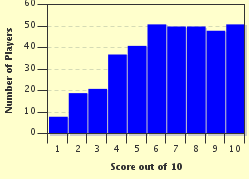Quiz Answer Key and Fun Facts
1. Which opera by Wolfgang Amadeus Mozart contains the character Papageno, whose profession is that of bird-catcher?
2. Rossini wrote an opera whose English translation is "The Thieving Magpie". But what is its original Italian title?
3. Which British composer wrote an opera entitled "Yan, Tan, Tethera", which takes its name from a northern English sheep-counting rhyme?
4. Benjamin Britten wrote three one-act operas which he called "church parables". Two of them are "The Burning Fiery Furnace" and "The Prodigal Son". What is the name of the third? The picture should be a clue here!
5. Which of the following is NOT an animal character in Janacek's "The Cunning Little Vixen"?
6. Which character in Wagner's "Ring" cycle, who we first meet in "Das Rheingold", reappears in "Siegfried" having transformed himself in the meantime into a dragon?
7. Benjamin Britten wrote an opera about a young man who, while not an actual fish, shared his name with one. His first name was Albert; but what was his surname?
8. "The Golden Cockerel" is an opera by which Russian composer, who also composed the orchestral suite "Scheherazade"?
9. William Walton wrote a one-act opera entitled "The Bear". To what does the title refer?
10. This flying creature gives its name to which 1874 operetta by Johann Strauss II?
Source: Author
stedman
This quiz was reviewed by FunTrivia editor
kyleisalive before going online.
Any errors found in FunTrivia content are routinely corrected through our feedback system.

